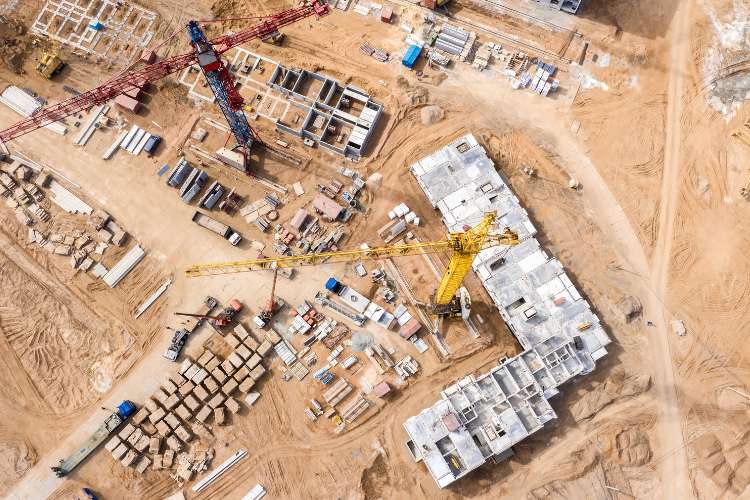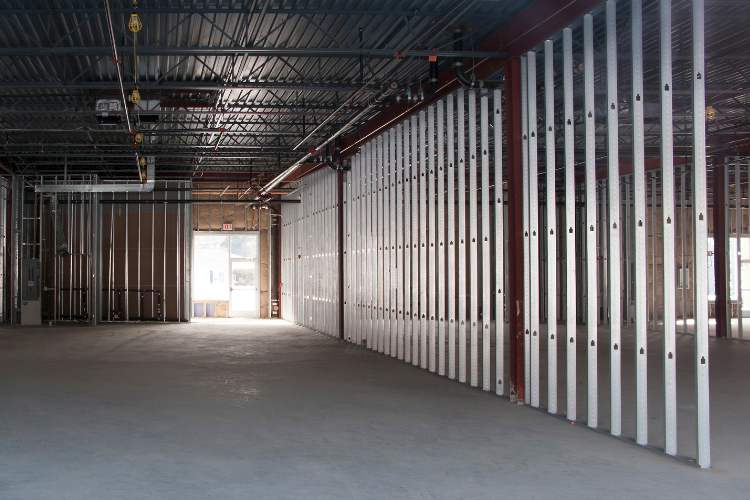Retainage has been called a necessary evil in the construction industry. It can be a massive setback because of how much it could delay your full project payment. But having a firm grasp of retainage is extremely beneficial to subcontractors. Anything that affects your payment speed is ultimately going to affect your cash flow. That’s why knowing your way around retainage – its limits, deadlines and flexibility – is critical for subcontractors. We sat down with industry veteran Ernie Adams to get his take on retainage, the most common mistakes subs make around it, and how to approach it.
Table of Contents
Why It Pays to Be Strategic With Retainage
Before we dive into the best practices around retainage, we wanted to touch on why they’re so important to seek out and try. You’ve probably experienced it, but sometimes retainage can take forever to be released. Adams has seen it take months – even years on some projects. So the lower you can get that percentage, the better. Even if it doesn’t take that long, you might still have to wait through the remainder of the project if you’re a critical-pathway trade. The point is, if you don’t take a strategic approach to retainage, you unnecessarily tie up money for long stretches.
Why Does Retainage Even Exist?
If you’ve ever been frustrated by retainage, it’s helpful to remember why it’s there. Adams agrees with the “necessary evil” label. As a subcontractor who used to work for a GC, he knows first hand why retainage is there: to ensure the sub is going to do their job. He has seen situations where the sub didn’t complete their work, and the GC was forced to keep progress payments to subsidize that work to another sub. If the situation got bad enough, it could result in a lawsuit. All that to say, retainage may not be your favorite topic, but it’s useful to know the purpose it serves.
The Retainage “Best Practices” You Should Be Using
1. Make Sure You Negotiate Retainage in Your Contract
Don’t make the mistake of thinking that the retainage in your contract, and the percentage it’s set to, is an end-all-be-all. It’s not. In fact, it’s entirely negotiable. Adams believes that the biggest mistake subcontractors can make with retainage is simply not trying to negotiate it. Even if it doesn’t work, it never hurts to try and get that percentage down. With caps as high as 10% in some states, ask if you can get it down to as little as 5%. It’s possible, and here’s how you can go about it.
How to Negotiate Retainage with Your GC
When you talk to the GC to discuss lowering (or even deleting retainage) from your contract, you should bring up:
- Your brand’s performance and reputation, to strengthen your argument
- The fact that you’re in it for the long haul and intend to continue working with them, to help cultivate trust (this may be a conversation about the length of your work history together)
- If you had to bond the job, your bonding company may require retainage be held; if you didn’t have to, it’s not necessary to bring up
- The absolute certainty that you’re going to finish the job
- If you feel like your negotiations need an extra push, you can offer price discounts to incentivize the reduction or elimination of retainage
In Adams’ experience, you’ll usually just get a reduction, not a full-blown elimination – especially if you have warranties associated with your closeouts. If you’re a critical-path sub, ask if they can release retainage early in the project so that you don’t have to wait for the rest of the other trades. Sometimes they accommodate you.
2. Bill for Retainage As Soon As Possible
Adams advises you to bill retainage as quickly as you can. Of course, a lot of GCs use payment systems that won’t allow you to bill retainage until they’re ready for it. Nevertheless, try to bill for it as soon as you’re contractually allowed to. Any unnecessary lead time you take to bill will only add to the already bloated retainage payment timeline.
3. Consider Using Retention Bonds to Get Paid Faster
Retention bonds are offered by certain surety companies. This is basically an insurance policy that can be used instead of retainage to help guarantee good workmanship. Rather than going through the retainage rigamarole with part of their payment withheld, a sub could negotiate an agreement where they purchase a retention bond instead. If any disputes pop up where the GC would traditionally use retainage to cover the cost, the surety company takes care of it. This could make sense if you are able to include the cost of retention bonds in your bid price, or if the cost of the retention bond mitigates the cost of not receiving retention on a project.
4. Know Your State Laws As They Relate to Retainage
It helps to brush up on how your state deals with retainage. State laws place limits and deadlines on it, and may stipulate how the funds will be stored. It’s in your best interest to be aware of them. In California, for example, retainage on public projects is capped at 5% prior to completion and acceptance of the project. Lien laws also have an effect on retainage. In Texas, the sub has to file an intent to lien retainage no later than 30 days after billing 100% of the job and within 30 days of final completion of the job, otherwise you’re at risk of not protecting your retainage payment.
5. Don’t Let Projection Disputes Slow Down Your Retainage Payment Timeline
Although payment sizes and timelines vary, they could look something like this:
Let’s say you have 4 months on a job, with a total of 4 pay apps. You bill for the work done each month, and retainage is taken out of each one of those pay apps, with a final bill to cover retainage separately.
Month 1 – 25% of the work has been completed, and 25% has been billed for, minus retainage.
Month 2 – 50% of the work has been completed, and 50% has been billed for, minus retainage.
Month 3 – 75% of the work has been completed, and 75% has been billed for, minus retainage.
Month 4 – 100% of the work has been completed, and 100% has been billed for, minus retainage.
However, a few factors complicate this:
- Sometimes the subcontractor’s spend doesn’t neatly match their project completion percentage, muddying the waters of how much they want to bill for.
- Projection forces subs to guess how much work they’ll have complete by the time they bill, while trying to account for factors they can foresee, like weather, and factors they can’t foresee, like unexpected work stoppages or material shortages/delays.
Occasionally, the GC will dispute the percentage the sub is saying they’ve completed. So can and should subs dispute it? According to Adams, his team often just acquiesces to the percentage or try to gently negotiate it. If they say 75% and the GC says 50%, maybe they could compromise and do 65%. Sometimes you’re fighting an uphill battle on a couple thousand dollars, and it simply isn’t worth it. But other times, it’s bigger and worth making a fuss about. These conversations need to be had over the phone, or at a walkthrough on the jobsite, where you’re assertive and evidence-driven about what you’ve completed. If you opt to dispute, don’t wait 3 weeks to a month to do it – dispute it quickly.
So how does all this affect retainage? The slower that project completion percentage moves, the longer it will be before that final retainage payment can be billed. Granted, plenty of other factors play a role in when you can bill, but this is a factor that you have some say over. You want to say that you did your due diligence for getting your project completed in a timely manner. It will ultimately affect not just your retainage payment date, but everyone else’s.
The construction industry payment process is full of intricacies and to be frank, annoyances, and subcontractors bear the brunt of it. It’s a situation they can remedy by taking a proactive, strategic approach to their project payments. Whether that means being tactical about retainage, getting an advance on their pay app, or getting more time to pay for their materials, the market is beginning to even the playing field for subs.









